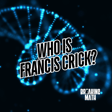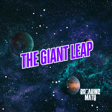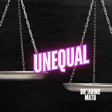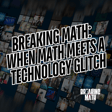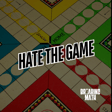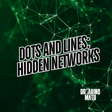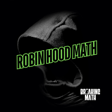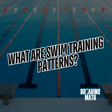Introduction and Episode Overview
00:00:00
Speaker
Spheres and circles are simple objects. They are objects that are uniformly curved throughout in some way or another. They can also be defined as objects which have a boundary that is uniformly distant from some point, using some definition of distance. Circles and spheres were integral to the study of mathematics, at least from the days of Euclid, being the objects generated by tracing the Anzo idealized compasses.
00:00:21
Speaker
However, these objects have many wonderful and often surprising mathematical properties. To this point, a circle's circumference divided by its diameter is a mathematical constant pi, which has been a topic of fascination for mathematicians as long as circles have been considered. So what can we learn from analyzing the properties of circles? What shapes can a sphere take? And what can we learn from a woolly sphere? All this and more on this episode of Breaking Math.
Community Engagement and Promotions
00:00:45
Speaker
Episode 52, round.
00:00:53
Speaker
I'm Sofia, and this is Breaking Math. With me, I have on Meryl Flaherty from episode 51. Meryl, thank you for coming on. Thank you for having me. And first, we have some plugs. We have a tier on Patreon, $22.46, which is pie to the E dollars. That's patreon.com slash Breaking Math. That'll be a monthly donation to get a poster that has tensors on it, a definition of tensors, some introduction to how tensors are used in the general theory of relativity.
00:01:22
Speaker
You don't want to donate every month and if you donate one dollar or more a month you get our episodes without ads We also have a tier where we deliver outlines and there's the same tier one dollar or more and that's patreon.com says breaking math If you want the poster, but you don't want to donate every month We have a poster store at facebook.com slash breaking math podcast. Just click on shop It is fifteen dollars and fifteen cents for tensorboaster, which I believe is eat the e dollars With four dollars and fifty cents you're being handling which is nineteen dollars and sixty-five cents total
00:01:52
Speaker
And yeah, it's a pretty fun poster. I know that holidays are coming up. Also, you can find updates about the show on Facebook. At Twitter, we're on at Breaking Math Pod. We're starting to tweet there a little more. And we have a website, breakingmathpodcast.app.
Exploring Circles and Spheres in Mathematics
00:02:08
Speaker
That is breakingmathpodcast.app, where we have different demonstrations such as what a 4D series is, how to do a supernky triangle by picking random points. Also, we have the game of life on a Klein bottle. So that's pretty cool.
00:02:21
Speaker
You can also check out Sister Podcast, Turing Rabbit Holes, wherever you find podcasts. Also, you're telling me that E to the E is not 27? E to the E is not 27. Why is E3? E equals pi equals 3, right? As an engineer. We don't have engineers on this show. Damn. Alright, so Meryl, what do you think is cool about spheres and circles and all that?
00:02:45
Speaker
from a topological standpoint, spheres are pretty much the simplest shape you can think of. It's like join everything, anything to a sphere, and it's still the same shape. Like take a torus, join a sphere to it, just glue a sphere. It's the same thing. It's kind of like the identity of, you know, topological objects. Can you explain what you mean by joining a sphere via torus?
00:03:10
Speaker
So suppose you had just a torus like a regular old donut and it's like, say you cut a hole out of that and you cut a hole out of a sphere and you glued those two together. Well, the sphere would just kind of disappear into that torus. It would just still be the same donut. It would still have the same donut hole.
00:03:28
Speaker
So topologically, they're interesting. I think they're interesting for other way for other reasons. I mean, I like I like that the fact that they could be extended to any dimension, even though they're continuous objects. I mean, you could do that with like hyper hyper parabolas and paraboloids.
00:03:44
Speaker
And all that stuff, but we're doing an episode on spheres just because they're cool They're the simplest object, but we have all this math related to them I mean Euclid as we're gonna see to find his entire system of math using spheres and Straight edges and so without further ado here we go
Historical Insights on Euclidean Geometry
00:04:03
Speaker
Alright, so first on the history of spheres and circles, which is a very difficult thing to do because planets are spherical. I mean, spheres just exist naturally. But I guess we could talk about the early history. The early history, I mean, people didn't understand spheres very well. They understood it a lot of times through the study of pi. Until about 1000 BC, people thought pi was between 3 and 3.125, which is not very accurate. Finally, Euclid started using spheres and circles to do different proofs.
00:04:32
Speaker
And he did this with compass and straight edge geometry. And Meryl, do you want us to say anything about compass and straight edge geometry? Like I mean, do you want to explain maybe the limits of what you can do with it? I mean, it's it's all proofs by construction. I mean, it's just like you can drop circles and you can drop spheres and you can like get things such as length and circumference through them and you can, you know, do division to find out it's like what ratios are and
00:05:00
Speaker
What's interesting though is that using a compass and a straight edge, you can't do a lot of elementary things like you can't make a sphere of twice the volume of another sphere, or you can't divide an angle by three or even five. There's a very limited amount of stuff that you can do with it.
00:05:19
Speaker
However for about a thousand years it was like the golden standard for math and geometry was Euclid's Elements which we've talked about many many times on the show. The proof that he had for the area of a circle being half the area of a rectangle is that he divided the circle into a bunch of slices of pie basically and made the slices of pie infinitely thin.
Mathematical Proofs and Concepts
00:05:43
Speaker
and noted that those are triangles about the size of the radius tall with the total base length of the circumference of the circle, right? You could have basically proved that a circle has the area of a triangle with a base of the circumference and a height of R. So you could imagine this as, let's say you take an orange, right? Right. And you peel apart the orange and you lay all its slices down so that all the points of the slices are facing up and you have the orange skin.
00:06:11
Speaker
Like if you did that in the orange and infinite number of segments, you could make those segments simple triangles, right? Yeah. And then they together would all have the area of the circle. Okay. So pretty much you're taking a bunch of triangles and adding them up to the area of the circle is what you're saying.
00:06:33
Speaker
Yeah. And so the basis of all those triangles all put together is equal to the circumference of the circle. And the height of all those triangles, because they're all segments of the circle, is r. So the radius. Yeah, the radius. And so 1 half times the circumference, which is 2 pi r times r, leads us to the very familiar formula pi r squared, or 1 half tau r squared.
00:06:59
Speaker
right because you know those of us who follow by heart will you know refuse to accept pi and tau which is just two pi is the real circle constant all right and then we go on to Archimedes who proved that the volume of a sphere is two-thirds the volume of the enclosing cylinder
00:07:17
Speaker
And we might do this on a problem episode or something, but simply put, he did this by taking a cylinder that encloses a hemisphere, right? And then a cone that starts at the top of the cylinder and goes down to the bottom.
00:07:33
Speaker
and they noted that with every slice, the slice of the cylinder minus the slice of the cone was equal to the slice of the sphere. So since the volume of a cone is one-third the volume of a cylinder, it's one minus one-third equals two-thirds. Again, we might do this on a problem episode. All right, so now we're gonna talk about multidimensional spheres.
Advanced Mathematical Definitions
00:07:58
Speaker
So Meryl, how can somebody extend the definition of a sphere to more than two or three dimensions?
00:08:03
Speaker
So the way that we usually define a sphere is in terms of metric spaces. And so what you have is you have a center point of your sphere and you have a set of points that are all the equal distance from that point. And what is a metric?
00:08:20
Speaker
So metric is usually some sort of measure of distance. And I think the easiest one to go with in this case is the Euclidean metric because that's what we use in space and in like local space.
00:08:35
Speaker
It's like when we're trying to say how far something is from another thing, we usually use Euclidean metric. So, you know, the square root of x squared plus y squared plus z squared and however many dimensions we have. So the sum, the square root of the sum of squares is the Euclidean metric.
00:08:56
Speaker
Yeah, so in the Euclidean metric, you can extend to any number of dimensions. So like, if it's four dimensions, you take and you have like some x, y, z and w, you just take the the difference in x squared plus the difference of y squared, z squared and w squared, add them all together and take the square root, you get the distance.
00:09:16
Speaker
So, and we're talking about like something simple like the one sphere. And the one sphere is a circle, correct? Right. And why do we call that a one sphere, not a two sphere? It's a two dimensional object. Because even though it is, it exists in two dimensional space, there's only one dimension about what you can move about the curve that is the one sphere, which is like the angle. It's what we normally call it, right?
00:09:40
Speaker
Right. Yeah. So like an angle is anywhere like in our common system is zero to 360 degrees or zero to two pi or whatever. And that's only one dimension because there's only one number specified. However, it's embedded right in two dimensional space.
00:09:56
Speaker
Right. And pretty much what that means is that so there's two dimensions that we're moving about x
Dimensional Analysis of Spheres
00:10:04
Speaker
and y, but we're restricting ourselves to say square root of x squared plus y squared is equal to one. That's our unit circle or our unit one sphere. And unit just means one, right? Right. Unit means that our that our distance from the center is just one.
00:10:22
Speaker
Yeah. So one meter, one foot, one barley corn, whatever. So basically we have this notion of a distance now for any number of dimensions. So a sphere is basically the locus of points, meaning the collection of points that are equidistant from some point, right? Right. And so in like 10 dimensions, right? And a nine sphere would exist in 10 dimensions and it would be everything that was equidistant from some point in this 10 dimensional space. Exactly.
00:10:51
Speaker
All right, so let's say we have an n-sphere, and if the n-ball, right? If the n-ball has volume, has dimension 2, then it's like a circle, right? And it's pi r squared.
00:11:03
Speaker
Right. And actually, I'm not sure we actually define what a ball is. A ball is, whereas the sphere is the points that are equidistant from some center, right? Right. I mean, you know, a ball is everything less than that. Right. So the ball is everything contained in and including that sphere.
00:11:22
Speaker
Yeah, so a three ball is like if I filled a basketball up with clay. And also keep in mind, so the three ball would be all of the contents within the two sphere, because the three ball and the two sphere both exist within three dimensional space, but the three ball is actually filling up three dimensional space inside of that sphere.
00:11:44
Speaker
You want to know what's interesting is that the end ball with the maximal amount of a hyper volume is a five-dimensional end ball, which is 5.264 times R to the fifth versus like if it's a sphere, it's four thirds, which is 4.188
Topology and Its Applications
00:11:58
Speaker
and the surface area just for the trivia of a unit sphere is maximized at seven, which is 16 pi cubed over 15.
00:12:06
Speaker
Which is 16 pi cubed over 15. The end ball was 8 pi squared over 15. But n pi cubed over 15 is 33.07 versus in three-dimensional space is 12.56. And I don't know, I just kind of find that interesting. And we might do a problem episode on the relationship between the volume of balls and spheres. But, um, Merrill, what is the volume of a zero-dimensional sphere? Be zero. Actually, it turns out it's one. I guess you just count the sphere. I mean, just count the ball. All zero balls have volume one.
00:12:35
Speaker
Right. Cause my thought is a zero sphere is just a set of two points, right? Just like say that it's like, Oh yeah. Yeah. Sorry. I'm into zero ball. Yeah. Zero ball has volume one. Okay. Although yeah, I guess a zero sphere would have surface area too.
00:12:50
Speaker
Well, except, so if you're talking about a zero sphere, then that's just a set of two points. That's just like, say it's radius one, then you have one and negative one. And those are the two points you have in that zero sphere.
00:13:07
Speaker
Yeah, but we also have to measure in zero-dimensional space, which I'm pretty sure is just counting, kinda. Right. Math, everyone. Math, can you believe it? And the spheres and balls specifically are used a lot in set theory, right? Like geometric set theory? Like neighborhoods and all that? Oh, absolutely. It's like you can't go through a topology class without talking about balls. And what is a neighborhood?
00:13:29
Speaker
So the most basic definition of a neighborhood is that it's an open set of points around a specific point in your topological space. An open set is like, if an open set is like a sphere, it means that it has everything but the skin of the sphere, basically. Exactly. Versus a closed set, the closure of an open set would be like if you put a skin on it.
00:13:54
Speaker
Right. And so a closed set, for example, would be just the orange, including its skin. Yeah. Can a set be both open and closed?
00:14:03
Speaker
So there are some examples of that. For example, if we're talking about like the real numbers or any like n dimensional Euclidean space, it's like if you take that whole space itself, it's considered both open and closed witchcraft. Yeah. And if you have a set that is neither open or closed, which would be like if you appealed half the skin off.
00:14:24
Speaker
Basically, the point here is that spheres lend themselves to being used in set theory and topology. All right, so what happens if we define a sphere with other distance metrics?
Metric Spaces and Distance Metrics
00:14:36
Speaker
Now, I'm going to just talk about two metrics here, the Manhattan distance and the maximal distance, I suppose.
00:14:42
Speaker
Right. So if you had, say, Manhattan distance, then wouldn't your idea of a sphere pretty much just be a square? Well, it'd be an octahedron, right in three dimensions. Right. And the reason why is because imagine a, okay, what is the Manhattan distance? So it's the horizontal distance plus the vertical distance.
00:15:04
Speaker
And who decides what is horizontal and what is vertical in Manhattan distance? It's just some x-axis and some y-axis. Yeah, the mathematician. You have freedom. And so it's called that because in Manhattan, the streets are up and down and left to right. So to go diagonally, you have to go all the way sideways and all the way up. So if something is completely diagonal to you, then it's the least efficient path.
00:15:25
Speaker
But yeah, so you can imagine if you start with the point at the center, right? If you go forward two feet and you want a sphere with radius five, you can only go up and to the right a total of three more times. And if you play with this around, you'll see that is equal to an octahedron, which is basically a square with a point above it and a point below it and all the points connected together, right?
00:15:47
Speaker
So I'm going to just take a square and you cut out all the corners. So you have eight sides of equal length. Yeah, exactly. Yeah, you take you take all the points that are up the top, the top, bottom, left, right and forward and back middle points and you connect them all together. And I mean, play around with this on paper and you'll see. But what if we have a distance metric that's like the greater of the two or three distances versus the Manhattan distance, right? I mean, why could that? Why is that a distance metric, first of all?
00:16:17
Speaker
Like why is that valid? So there's a certain set of rules for determining if something, you know, works as a metric. So distance metric is pretty much you take any two points and there's a certain set of rules that it follows. And we already talked about Euclidean distance versus, which would be like a plane flying over between two people versus the Manhattan distance where, which is if you go left and then up, right.
00:16:42
Speaker
Right, so there's three rules that make a certain metric, a, you know, a distance metric. Yeah, makes a certain function, a distance metric, right? Right, and so the first one is, say you have two points x and y, the distance between x and y, so d of x, y, and distance between y and x, so d of y, x, those have to be the same.
00:17:08
Speaker
Yeah, so for example, so a distance metric can't be, for example, if you're hiking, it can't be how hard it is to travel between two latitudes and longitudes. Because if you go uphill and downhill, it's a different level of difficulty. So that is not a distance metric versus. Yeah. Yeah. So the other one is the distance between one point and the same point is always going to be zero. Yeah. If you don't travel, the distance from home to home is zero. Okay. And what's the third one? The triangle inequality, right?
00:17:35
Speaker
Right. So let's say you have three points, X, Y, and Z. Let's make this, let's say we have the first point. Let's say that's Washington, DC, right? The second point is Paris and the third point is Beijing.
00:17:49
Speaker
Right. So that's the thing is so say that we're going from just Washington DC to Beijing. So the distance from Washington DC to Paris plus the distance from Beijing to Paris is going to be at least the distance between Washington DC and
The Triangle Inequality Explained
00:18:15
Speaker
Yeah, it's the reason why nobody likes changing buses, right? Right. If you change buses, you're always going to take longer than it takes to just go the direct distance.
00:18:24
Speaker
Exactly. And that's kind of the idea behind the triangle equality, which if you take graduate mathematics, everything becomes a triangle equality. So be prepared for that. So let's say we have some origin, which is just some point of reference, right? And we have a metric that is the maximal metric between all the different parameters x, y, and z. Why could that be considered a metric?
00:18:47
Speaker
And I think you could answer that with a triangle inequality, right? I mean, first of all, the metric is 0, 0. I mean, backwards and forwards works, right? But the distance between two things, the distance can't be more than any of the two things. The distance will always be only the maximal thing, right? Right. And the sum will always be at least the maximal thing, right? Yeah, and that satisfies the triangle equality.
00:19:11
Speaker
Yeah. And so what shape does that result in in three dimensions? So for example, let's say we're at the origin, right? If we go up the distance of R, right? We are, we have met the conditions, right? Okay. So if we go forward, backwards, left and right, we're still at the conditions. So it's a cube, right? Yeah, I can see that. Yeah. So basically we have shown that a sphere using different metrics can be made into a six-sided or eight-sided die.
00:19:40
Speaker
So the last thing we're going to talk about is the Harry Ball theorem.
The Hairy Ball Theorem Discussed
00:19:44
Speaker
Meryl, what is the Harry Ball theorem? So it's like, so you have a two-sphere. So you have two-sphere being like a basketball filled with air.
00:19:51
Speaker
Yeah, so your sphere that you're thinking about your regular sphere in 3D space. So let's say that you have a bunch of vectors, or in this case, hairs that are tangent to that sphere. What Meryl is saying is that the direction that the hair grows on the sphere is the most important part of this problem. Right.
00:20:11
Speaker
So every vector is going to be tangent to the sphere, and we call it a two vector because it is in the tangent space of a point on a two-dimensional manifold, which is the sphere. And any general method of measuring these vectors will require two numbers, which is why it's two-dimensional.
00:20:30
Speaker
So what is the hairy ball theorem? So we have these all these vectors all over I mean if you have if anybody's ever seen a map of like hurricanes or something like that You can imagine it like that on the surface of the earth like wind vectors are a perfect example of this but continue
00:20:45
Speaker
So when we're looking at all of, so let's say that we're talking about a continuous vector field, and this is all two vectors on the sphere, then there's always going to be at least one point on this sphere. So it's either going to be some sort of cowlick or part or whatever, when you're trying to comb this sphere, where at least one point is always going to be zero.
00:21:10
Speaker
Yeah, and I'm not sure if any of you have dogs, but if you notice that all dogs have parts on their fur, or like a cowlick, a lot of times it's on their chest and stuff.
00:21:19
Speaker
And that is a result of the Harry Ball theorem. So the way the Harry Ball theorem works is that if you have a sphere or something topologically equivalent or homeomorphic, we would say to a sphere and he had a vector field on that manifold. And something homeomorphic might be like a potato, right? Right. Would a banana be homeomorphic to a sphere? Absolutely. What about a human?
00:21:41
Speaker
I mean, that depends how many holes you consider a human to have. Seven. But it's like, say that you're just considering the digestive tract that's a hole in us that at least makes us a Taurus.
00:21:52
Speaker
Yes, humans are donuts. And he includes nachos and tear ducts, so we have more. Coffee cups are also donuts, but I'm sure you all have heard that at least once. So going back to the wind example, the wind is kind of like hair being curved, hair being all over the sphere, right? Right, it's a tangent vector to the sphere.
00:22:14
Speaker
Yeah, tangent meaning that it is on the sphere. Because I mean, wind does go up and over, but I mean, usually when you see like a weather map, it's left and right, up and down, right? Or like latitude and longitude. So there's always a point on the Earth. This is what this proves. There's at least one point on the Earth where there's no wind at any given time.
00:22:34
Speaker
Right, because you can think of wind on the planet Earth as a tangent bundle, as in for every point there's some tangent vector, and at least one point on this surface, there's a point where that tangent vector is zero, and that means there's zero wind velocity.
00:22:55
Speaker
You might be thinking, can any 3D service become flat? And we have covered this a little bit on other episodes, but it bears repeating that yes, they can. A donut, for example, can be combed up flat in pretty much any direction. You can comb it along the side of the donut, right? Right. And so it goes around like a racing loop.
00:23:12
Speaker
Yeah, because that's the thing is that with a circle, there's exactly one, you know, curve that we can call a great circle. And it's like we can go about the tourists, the donut in multiple ways that aren't any one great circle and have them go in the same direction, the same orientation. And as a result, you don't have to have any one point that's zero on that vector bundle. It's just you get to have
00:23:42
Speaker
you know, a continuous vector field that isn't ever zero. And so what do you mean by great circle and vector button? Let's go through great circle first real quick. So great circle is pretty much
00:23:54
Speaker
It's a line that ends up at where it starts, right? Exactly. Although not every, you know, circle on a sphere is a great circle. It's like the equator is, for instance. So if, if I were Forrest Gumping, right, if I were Forrest Gump and Jesus combined, and I could run over water, if I ran into a straight line, that would be a great circle, right?
00:24:16
Speaker
Exactly. And what does it mean to go to go straight in a curved space, like a like there are surfaces of the earth or the surface of a banana, or the universe in four dimensions? Right. So that's the shortest distance between any two points on that surface. And you're saying that donuts don't have a specific great circle, right?
00:24:36
Speaker
well, so it's a little more complicated because there's two different ways that you can, there's two different directions that you can keep going in and get to the same point.
00:24:48
Speaker
Yeah, you can either go around the edge of this, of the donut, right? Kind of like, um, like if you were holding the donut, uh, on the, like the side, the place where your hands would curl, or if you were grabbing the donut, trying to place it on top of a coffee cup, for example. So your hands were on the side of the donut. That's a different type of great circle, right? Right. And so that's the interesting thing about, I mean, you can even say that there's a great circle if you angle it, right? So that it curves around into a spiral and gets to his original point, right?
00:25:17
Speaker
Right. And I think that's part of what means that you can comb a hairy donut, but you can't comb a hairy ball is that on the hairy ball, you're always going to end up with some zero point or some sort of part. But on a hairy donut, you try to comb it and you can just kind of keep going in the same way, either like around the donut or through the center.
00:25:44
Speaker
And it just works because you're not, you know, restricted in that way the way you are in a sphere.
Simply Connected Spaces and Poincare Conjecture
00:25:51
Speaker
Well, it's interesting is that if you have a two-dimensional, I mean a one-dimensional sphere, meaning the edge of a traditional circle, you can comb it flat, right? Right. Which is the surface of a hyperball, a four-dimensional ball, a three-sphere. Can you comb that flat? Evidently you can. Yeah, I showed Merrill earlier, but yeah, basically any odd numbered sphere, you can comb flat, any even numbered has a cow elixir parts.
00:26:17
Speaker
Right and it's like for the even one especially I find it interesting because it's like take this three sphere which is the you know surface of a four-dimensional ball and that we have proved at this point through the Poincare conjecture that that actually is a simply connected three manifold.
00:26:39
Speaker
Yeah, the Poincare conjecture is it was a millennium problem. The person who approved it turned the money down, which is a million dollars offered by the Clay Institute. I would not turn down a million dollars. No, me neither right now. But in a nutshell, what the Poincare conjecture says is that the three sphere is simply connected. And what is simply connected?
00:27:02
Speaker
So simply connected is just as a further elaboration upon connectedness of a space. And so what does a space being connected mean? A space being connected means that for any two points in that space, you can have an open set that contains both of those points.
00:27:22
Speaker
Yeah, meaning that you have some kind of collection that has both of those points, right? And that that collection has boundaries. The boundary of these points does not exist in the set.
00:27:33
Speaker
Right, and then there's a stronger condition of connectedness, which is path connectedness, which means that for any two points in the space, you can draw a path between those two points. And then, so something being simply connected means that, so for any two points, you can take any of the paths between those two points and continuously morph one of those paths into another.
00:28:02
Speaker
Yeah, so, I mean, you can imagine this as being like if somebody was washing a coffee mug, right? And then their hair fell, the strand of their hair fell out into the mug. And the mug is kind of wet, so the hair clings to the strand. And if you move that strand around the coffee cup without taking off the surface, but leave the points the same, this is the sort of operation we mean, right? Exactly.
00:28:25
Speaker
Spheres and circles are simple mathematical objects. It is perhaps because of the relentlessness of the curvature or simply due to the nature of these objects that we learn quite a bit by analyzing them. We have learned about the nature of the winds on Earth and how spheres can be things that don't exactly look like spheres. One thing is we're certain, however, we will continue to learn about mathematics and our own universe by examining these objects for generations to come.
00:28:51
Speaker
I'm Sophia, and this has been Breaking Math. With me I have on Meryl Flaherty. Would you like to plug anything this time? How about a song that people might like? Actually, I know what to plug. Alright.
00:29:06
Speaker
If you are a graduate student at the University of New Mexico, then there is a union forming with the United Electrical Workers.
Graduate Student Unionization at UNM
00:29:17
Speaker
If you happen to be a graduate student worker at the University of New Mexico, then we are forming a union. Go to unmgrads.ueunion.org to find out more about our graduate student union and how we can be recognized by the University of New Mexico.
00:29:36
Speaker
as a union and improve our conditions as graduate workers. Can anyone who is not a graduate worker, can they do anything to support this cause? Is there anyone to call letters to write to people? I would say support graduate worker unions on your own university campus because they improve conditions for graduate workers all over the country.
00:30:04
Speaker
Thank you for that. And yeah, unions are a very important part of labor organization. And I hope that this message reaches people who need to have this message reach them. And if you have friends, spread the word. I'm Sophia, and this has been Breaking Math. Math, it's beautiful, disgusting, and beautiful.
00:30:31
Speaker
Disgusting mostly and I say this is a math grad student.


